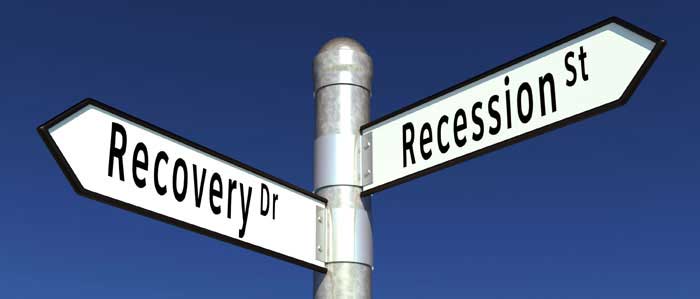Amelia Island, located on Florida’s northeast coast near the Georgia border, has long been one of the United States’ most elegant and understated destinations. Known for its pristine beaches, well-preserved historic districts, upscale resorts, and a thriving cultural scene, the island combines the charm of the Old South with the sophistication of a modern tourist hub. For readers of usa-update.com, Amelia Island offers a perfect lens through which to examine how heritage, hospitality, and economic development intersect in a way that appeals to both domestic and international travelers in 2025.
As one of the few places in North America that has been under the control of eight different flags, Amelia Island’s history is deeply woven into the identity of the region. Yet beyond history, it has emerged as a vibrant part of the Florida economy, with expanding investments in tourism, sustainable business initiatives, and high-value real estate. This guide provides a comprehensive overview of Amelia Island—from its cultural depth and natural beauty to its role in the broader U.S. economy and global travel markets.
Historical Background and Heritage
Amelia Island’s layered history sets it apart from many other American destinations. Controlled at different times by Spain, France, Britain, and even privateers, the island has been called the “Isle of Eight Flags,” a distinction that adds to its mystique. The historic town of Fernandina Beach, with its Victorian-era architecture and cobblestone streets, remains the cultural and historic heartbeat of the island.
In 2025, heritage preservation remains central to the island’s development strategy. The Amelia Island Museum of History continues to provide context for visitors, emphasizing how international rivalries shaped the region. The annual Isle of Eight Flags Shrimp Festival brings thousands of visitors, blending history, food, and entertainment in a way that ties the past to the present. For business travelers, this combination of history and modern leisure infrastructure has positioned the island as a unique meeting destination.
Tourism and the Local Economy
Tourism drives Amelia Island’s economy, and in recent years, it has become a model for upscale, sustainable hospitality in the United States. Resorts such as The Ritz-Carlton, Amelia Island and Omni Amelia Island Resort set high standards in luxury, while a growing network of boutique inns caters to travelers seeking more intimate experiences. The hospitality sector employs thousands and contributes substantially to local employment, creating opportunities across services, events, and real estate development.
Florida’s economy is highly dependent on its tourism revenue, and Amelia Island plays a notable role within that framework. The island has positioned itself to attract both affluent retirees and high-spending vacationers, which has strengthened tax revenues and stimulated growth in real estate and infrastructure. Insights into broader national dynamics can be found on usa-update.com/economy.html, where trends in regional development continue to shape investment prospects.
Amelia Island Interactive Timeline
Explore the rich history and development of Florida's "Isle of Eight Flags"
French Settlement
First European settlement established by French explorer Jean Ribault, marking the beginning of Amelia Island's "Eight Flags" legacy.
Spanish & British Rule
The island changes hands between Spanish and British control, with each power leaving distinct cultural and architectural influences.
Patriots & Pirates
Brief period under Patriot Republic and pirate control, adding to the island's colorful "Eight Flags" history.
United States Territory
Amelia Island officially becomes part of the United States, beginning its integration into American development.
Fernandina Beach Founded
The historic town of Fernandina Beach is established, becoming the cultural and commercial heart of the island.
Fort Clinch State Park
Fort Clinch becomes a state park, preserving Civil War history and establishing the foundation for heritage tourism.
Tourism Development
Early resort development begins, with first luxury hotels and golf courses establishing Amelia Island as an upscale destination.
Shrimp Festival Begins
The Isle of Eight Flags Shrimp Festival launches, celebrating maritime heritage and becoming the island's signature event.
Ritz-Carlton Opens
The Ritz-Carlton, Amelia Island opens, establishing the island as a premier luxury destination and attracting international visitors.
Concours d'Elegance Debuts
The Amelia Island Concours d'Elegance begins, becoming one of the world's most prestigious automotive events.
Cultural Renaissance
Chamber Music Festival and arts scene flourish, adding cultural depth beyond beaches and establishing year-round appeal.
Remote Work Boom
Pandemic-driven remote work trends increase demand for luxury lifestyle destinations, boosting real estate and permanent residents.
Sustainable Luxury Hub
Today's Amelia Island balances heritage preservation with modern luxury, attracting global investors and eco-conscious travelers.
Real Estate and Investment Opportunities
In 2025, Amelia Island is experiencing heightened interest from domestic and international investors, particularly in real estate. The demand for oceanfront properties, gated communities, and historic restorations has surged, mirroring broader trends across Florida. Many investors see Amelia Island as a stable alternative to more saturated coastal markets like Miami or Tampa.
The rise of remote work and the appeal of “lifestyle migration” have further fueled demand. Professionals from across the United States and even abroad are seeking second homes and permanent relocations, often drawn by the island’s balance of luxury and tranquility. This dynamic has created a competitive real estate environment that mirrors larger movements in U.S. property markets, as reported regularly on usa-update.com/business.html.
Local governments have been cautious in balancing development with environmental protection. Zoning regulations, green building standards, and conservation easements have been strengthened to maintain the island’s ecological integrity, an approach that resonates with sustainable business practices across North America.
Natural Environment and Outdoor Activities
Amelia Island’s natural beauty remains its most valuable asset. With 13 miles of uncrowded beaches, lush maritime forests, and extensive marshlands, the island appeals to outdoor enthusiasts and eco-tourists alike. Birdwatching, kayaking, and horseback riding along the beach are signature experiences, while Fort Clinch State Park provides opportunities to explore both history and nature.
Sustainable tourism initiatives have expanded in recent years, with a strong focus on preserving the fragile dune ecosystems. Environmental organizations collaborate with local businesses to ensure that the tourism economy does not undermine long-term ecological health. Visitors seeking guidance on eco-conscious travel practices often draw insights from Learn more about sustainable business practices.
This emphasis on sustainability also aligns with global consumer expectations, especially among travelers from Europe, Canada, and Asia, where responsible tourism has become a mainstream expectation. As a result, Amelia Island’s natural offerings are not just recreational but also economically strategic.
Culture, Arts, and Lifestyle
Cultural vibrancy is central to Amelia Island’s identity. The Amelia Island Chamber Music Festival, one of the most respected classical music events in the United States, brings international performers every spring. Galleries, artisan shops, and theaters contribute to a thriving arts scene that elevates the island beyond a simple beach destination.
Food culture is equally significant. The island’s culinary scene combines Southern traditions with international influences, with shrimp and seafood as regional highlights. Farm-to-table dining, sustainable seafood sourcing, and wine events create a sophisticated lifestyle experience that appeals to both residents and visitors. The lifestyle dimension of the island connects well with broader themes covered by usa-update.com/lifestyle.html, showcasing how culture and well-being drive community identity.
Festivals and community gatherings also provide consistent opportunities for local economic impact, blending entertainment with commerce in a way that strengthens social cohesion.
Connectivity and Accessibility
Accessibility is a defining advantage for Amelia Island. Located just 30 minutes from Jacksonville International Airport, the island is well-positioned to receive both domestic and international visitors. This proximity has allowed Amelia Island to become a gateway for travelers coming from Europe and Latin America, many of whom view the island as a tranquil starting point for U.S. travel.
Improved infrastructure projects, including expanded roadways and digital connectivity upgrades, have made Amelia Island more attractive for business events and extended stays. These investments align with broader U.S. infrastructure priorities, detailed further on usa-update.com/technology.html, where digital integration is reshaping tourism and business services across the nation.
Amelia Island in the Broader Travel Market
Within the U.S. travel and tourism market, Amelia Island is often compared to destinations such as Hilton Head in South Carolina or the barrier islands of Georgia. However, its blend of history, luxury, and environmental stewardship gives it a distinctive brand.
Globally, Amelia Island is increasingly marketed to European and Canadian travelers, who appreciate its slower pace compared to Florida’s more commercialized attractions like Orlando or Miami. As international tourism continues to rebound in 2025, Amelia Island has positioned itself as a premium destination that embodies both exclusivity and authenticity. Global tourism trends can be explored further through usa-update.com/international.html, highlighting the island’s growing role in worldwide travel patterns.
Economic and Employment Impact
Amelia Island’s prosperity is deeply tied to job creation. The hospitality, real estate, and events sectors provide employment across a range of skill levels. Seasonal events and festivals further boost temporary work opportunities, while professional services in finance, healthcare, and education support the community year-round.
As the U.S. economy evolves in 2025, employment patterns in regions like Amelia Island demonstrate the importance of tourism-driven micro-economies within larger national frameworks. For professionals evaluating labor market shifts, usa-update.com/employment.html offers deeper insights into how local job growth connects to national employment trends.
Amelia Island’s Ongoing Significance
Amelia Island stands as a model for how a small destination can achieve global relevance through careful balance between history, culture, environment, and economic growth. Its ability to preserve heritage while fostering modern hospitality sets it apart, making it not only a gem within Florida but also a symbol of broader trends shaping the American tourism and lifestyle economy.
For readers of usa-update.com, Amelia Island represents more than a travel guide—it embodies lessons on how the U.S. can attract global investment, maintain sustainable growth, and provide enriching experiences for both visitors and residents. As 2025 unfolds, Amelia Island’s story will continue to be one of resilience, adaptability, and enduring charm.
Events and Festivals
Amelia Island has built a reputation as one of Florida’s premier cultural and entertainment destinations, with its calendar packed full of distinctive events that celebrate heritage, art, cuisine, and community spirit. The most iconic is the Isle of Eight Flags Shrimp Festival, which attracts more than 100,000 visitors every May. The festival combines seafood tastings, historical reenactments, arts and crafts exhibitions, and live music, turning Fernandina Beach into a lively showcase of local culture. The event not only celebrates the island’s shrimping industry but also highlights its deep maritime heritage.
In addition, the Amelia Island Concours d’Elegance, one of the world’s most prestigious automotive shows, draws international collectors, enthusiasts, and business leaders each March. Luxury car brands such as Porsche, Mercedes-Benz, and Jaguar use the event as a platform to debut rare models and concept vehicles. The economic impact of this event extends well beyond tourism, generating sponsorships, media coverage, and high-value business transactions. Readers interested in how such events shape broader U.S. economic activity can explore insights on usa-update.com/events.html.
Beyond headline festivals, Amelia Island hosts a growing number of arts fairs, food and wine events, and wellness retreats that appeal to diverse audiences. This emphasis on high-quality, niche experiences reinforces the island’s brand as a sophisticated destination rather than a mass-tourism locale.
Entertainment and Leisure
While Amelia Island prides itself on cultural depth, it also caters to those seeking entertainment and leisure in traditional and modern forms. From live music venues and theaters to nightlife hubs in downtown Fernandina Beach, the island provides a balance of relaxation and energy. Resorts frequently host curated entertainment, including jazz evenings, art exhibitions, and culinary showcases, enhancing the guest experience.
For sports enthusiasts, Amelia Island is a haven. Golf courses such as Amelia River Golf Club and Golf Club of Amelia Island are renowned for their challenging designs and scenic views, attracting both tourists and business groups. Tennis and pickleball facilities, growing in popularity across North America, provide additional appeal for active travelers.
In 2025, wellness tourism has become an increasingly important entertainment segment, with yoga retreats, spa resorts, and health-focused travel packages offered across the island. These trends mirror the national surge in wellness industries, where entertainment and health often overlap. More coverage of U.S. entertainment and lifestyle markets can be found at usa-update.com/entertainment.html.
Finance and Investment Opportunities
From a financial perspective, Amelia Island presents a unique case study in blending heritage tourism with long-term investment opportunities. Luxury resorts generate consistent returns, particularly as the island’s brand continues to rise among high-net-worth individuals. Investors from Europe and Canada increasingly look to Amelia Island as a stable, attractive option compared to volatile international markets.
Real estate remains the cornerstone of financial growth on the island. Properties near the oceanfront and historic downtown are appreciating at significant rates, and short-term rental platforms have expanded profitability for property owners. At the same time, financial institutions and wealth managers are increasingly guiding investors toward hospitality partnerships and fractional property ownership models.
Local policymakers continue to balance development with regulation, ensuring that financial gains do not come at the expense of environmental and cultural integrity. These dynamics resonate with national debates about financial sustainability and community growth, which are regularly analyzed on usa-update.com/finance.html.
Global Comparisons and Competitive Positioning
Amelia Island competes in a global marketplace for premium travel destinations. Comparable regions include Hilton Head Island in South Carolina, Nantucket in Massachusetts, and European destinations such as Mallorca in Spain or the French Riviera. What differentiates Amelia Island is its blend of accessible luxury and historical depth, coupled with the convenience of proximity to a major international airport.
From a competitive standpoint, Amelia Island offers value to international travelers seeking authenticity without sacrificing comfort. Unlike Miami or Orlando, the island does not overwhelm visitors with scale, instead cultivating exclusivity. This positioning has become particularly appealing in the post-pandemic era, where smaller, curated destinations are often favored over mass-market resorts.
Furthermore, Amelia Island is part of a growing trend of secondary destinations that compete with global hot spots. Its ability to leverage heritage, sustainability, and luxury ensures resilience even in volatile global tourism markets. To understand these shifts within the wider context of international travel, readers may refer to usa-update.com/travel.html.
Future Outlook to 2030
Looking ahead, Amelia Island is poised for sustained growth, provided it continues to balance development with preservation. By 2030, several key trends are expected to shape its trajectory:
Sustainable Tourism Expansion: With global travelers increasingly prioritizing eco-conscious experiences, Amelia Island’s conservation efforts will become an even stronger competitive advantage.
Luxury Real Estate Growth: Rising interest from international buyers is projected to continue, with gated communities, waterfront estates, and mixed-use developments leading demand.
Technology Integration: Enhanced digital infrastructure will expand opportunities for remote workers and business travelers, integrating the island into the broader U.S. digital economy. Readers can track these advancements through usa-update.com/technology.html.
Global Branding: Amelia Island’s reputation as a cultural and lifestyle hub will continue to expand internationally, especially among travelers from Europe, Canada, and Asia, where discerning audiences value authenticity.
Event Tourism Dominance: With events like the Concours d’Elegance gaining global prominence, Amelia Island will further entrench itself as a hub for high-value cultural and lifestyle gatherings.
These trends mirror broader developments across the U.S. economy, highlighting how localized growth reflects larger national transformations. For further reading, usa-update.com/news.html provides updates on economic and cultural developments that influence destinations like Amelia Island.
Conclusion
Amelia Island, Florida, embodies the essence of what a small destination can achieve when history, culture, economy, and sustainability converge in a unified vision. Its deep heritage, flourishing tourism economy, rising real estate market, and global appeal make it a case study in balancing preservation with innovation.
For usa-update.com readers, Amelia Island is more than a travel spot. It represents the resilience and adaptability of the U.S. economy, where even small communities can play outsized roles in global tourism, finance, and lifestyle trends. Looking toward 2030, Amelia Island will remain a beacon of heritage, luxury, and sustainable development—a place where America’s past and future meet on the shores of Florida’s Atlantic coast.










